The Leica 35mm Summicron V3 is lens I instantly felt at home with. I bought it not long after I bought my M7 and for a little while it just seemed to make the ideal combination for almost everything I wanted to photograph. In the time since then though, the regularity with which I have used it has gradually dwindled. What’s interesting about this, is that whilst my appreciation for it as a lens hasn’t changed, what I want from a lens and perhaps even the camera its attached to has.
The lauded Summicron
I think it’s quite widely accepted that if you’re looking for high quality lens for a Leica m-mount camera, the Summicron is the first place to start your search. It’s pretty much the standard Leica lens with the 35mm for those who like something a little wider, the 50mm for those who prefer something closer to a normal focal length. Many would even argue that 35mm is the first choice over 50mm as a standard lens for a rangefinder.
The reputation that precedes the Summicron is one of an excellent lens. Despite there being 5 or 6 versions of the 35mm, they are often referred to as all being excellent, with relatively minor differences between them. Because of this reputation, it’s quite easy to make the assumption that buying any Summicron is a safe bet, it’s certainly the assumption I made – and to be fair, despite what I’m about to tell you about the one I own, I’d probably say the same even now, though I’d say it with a caveat or two attached.
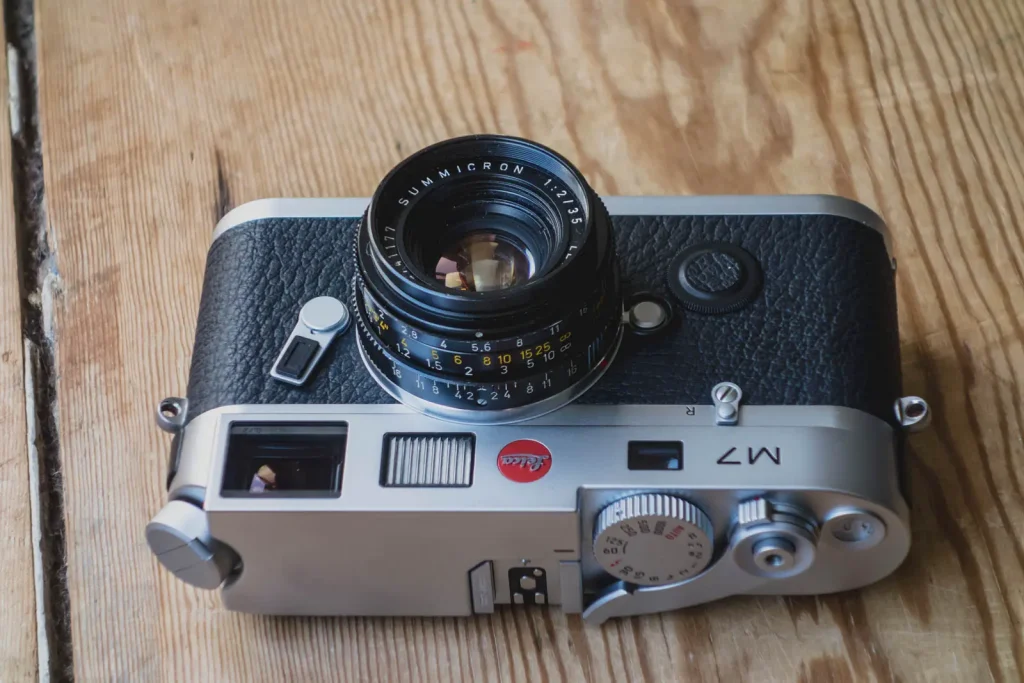
What I hadn’t really counted on when I bought my 35mm Summicron v3 was that outside of it being a Summicron, it’s still a 1970’s lens. What this translates into is that whilst it is of typical-for-a-Summicron remarkable quality, it does still demonstrate traits that are commensurate with the era from which it originates. It’s not as if I wasn’t expecting this either. As you will read, I chose the version 3 based on a review and other photos I’d seen online that demonstrated its character quite accurately to me. Yet despite this, the name ‘Summicron’ almost supplanted what I had read and seen, to the point that I expected something that was somehow less “flawed” than what I ended up with.
Loved, but underused
The range of reasons I write about this kit on this blog changes almost from post to post, and though I rarely mention my reasons for writing, this time it just seems relevant to do so. On this occasion I’m writing about a lens that I’ve had a great deal of success with, yet despite this success, I am now trying to rationalise selling it. I’m hoping writing this post will help me get my head around the idea of parting with it! It might seem odd that I’d be thinking about selling a lens that I feel I’ve had such success with, but the reality is, it’s also become a lens I don’t use that much – in fact, as far as I can remember, I only used it once over the course of entire summer. This is in stark contrast to when I first owned it; it lived on the M7 and got used all the time. This might seem odd, but there is no real mystery to me as to why it doesn’t get picked up any more. It comes down to two things, an issue of the focal length combined lens speed and the lenses undeniably strong character.
Focal length and lens speed
When it comes to shooting a rangefinder, the 50mm focal length has very much become my first choice. I have no real problem with the 35mm focal length, I sometimes struggle and sometimes thrive with the field of view, but in reality I feel the same about all the common focal lengths between 28 and 90mm – I don’t find any of them particularly hard to adapt to if I have no other option. Interestingly as a focal length I find myself completely at home with 35mm when it’s a part of a compact camera – it just seems to make a good field of view for the sort of snap shots I take with those sorts of cameras. The problem is, being so at home with this focal length as part of a compact camera means that if ever I feel like I’d like to shoot 35mm, I tend to be quite happy just picking up one of my compacts rather than one of the Leicas. The Contax T3 is a very good example of a camera with an enormously capable lens, that fits in my pocket – why bother taking the rangefinder when I can achieve the same with something so much smaller – and closer focusing for that matter. The only technical reason to take a rangefinder is where they come in more handy for situations like lower light photography. Then of course, when the light is lower, the 35mm Summicron v3 isn’t the lens I go for as the Voigtlander 35mm 1.4 then comes in to play. What this all means is that really the only reason to choose the 35mm Summicron v3 comes down to its character. But since it has such a strong character, this can sometimes feel a little like it’s getting in the way rather than being a reason to use it – and that’s despite how much I actually like the character it presents.
The Leica 35mm Summicron v3 character
As I mentioned, when I bought the lens, whilst I was aware that it would have an identifiable character, I don’t think I was quite as aware about how much this character would define and impact on how and when I would choose to use it. My previous experience of Summicron lenses – not to mention the quality that the name carries – lead me to believe that buying this lens would be this aforementioned “safe bet”. The 50mm Summicron v4 I now shoot more with definitely fulfils this “safe bet” expectation – it has what I’d call a fairly neutral character; it certainly doesn’t impose much of itself onto the end result in the way the 35mm v3 can do. The 35mm Summicron v3 has a much stronger character to my mind – or at very least it has a couple of character traits that feel like they define the lens.
Lens Flare
The Leica 35mm Summicron v3 is quite heavily prone to flare. Now before I get any further I feel I should emphasise the point that I think of flare as a funny thing. The effects of flare are not always unpleasant, but are wholly unpredictable – especially in a rangefinder when you get much less of a hint about what’s actually going on through the lens. 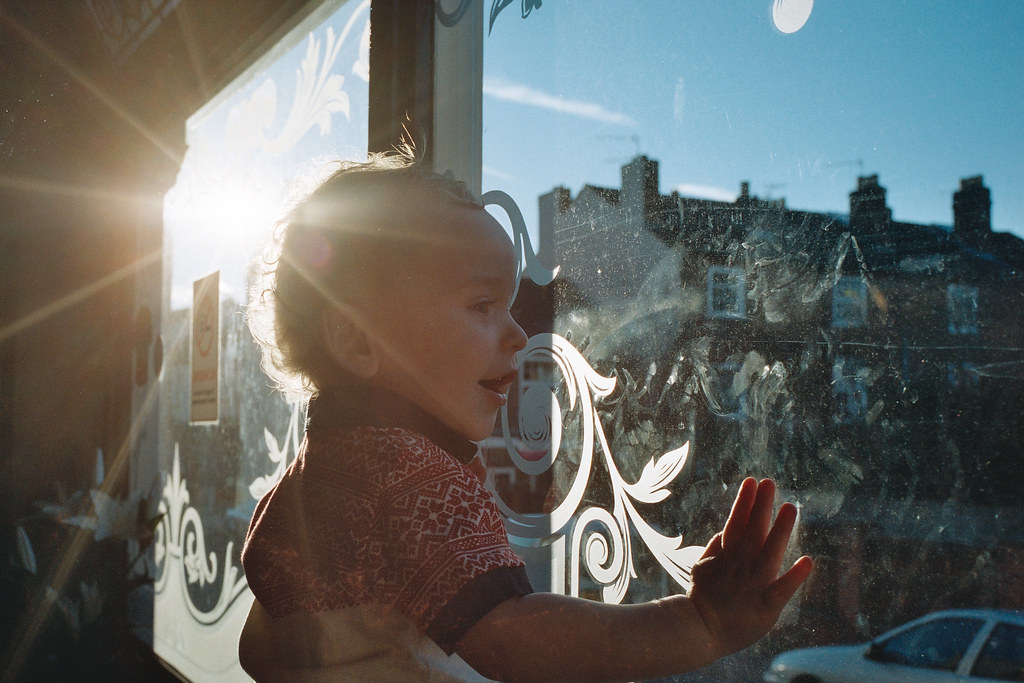
This couldn’t be more true of the 35mm Summicon v3 where results range from largely unaffected, through slightly affected with a just reduction in overall contrast, to very affected with ghosts and all sorts of other artefacts spreading right across the frame.
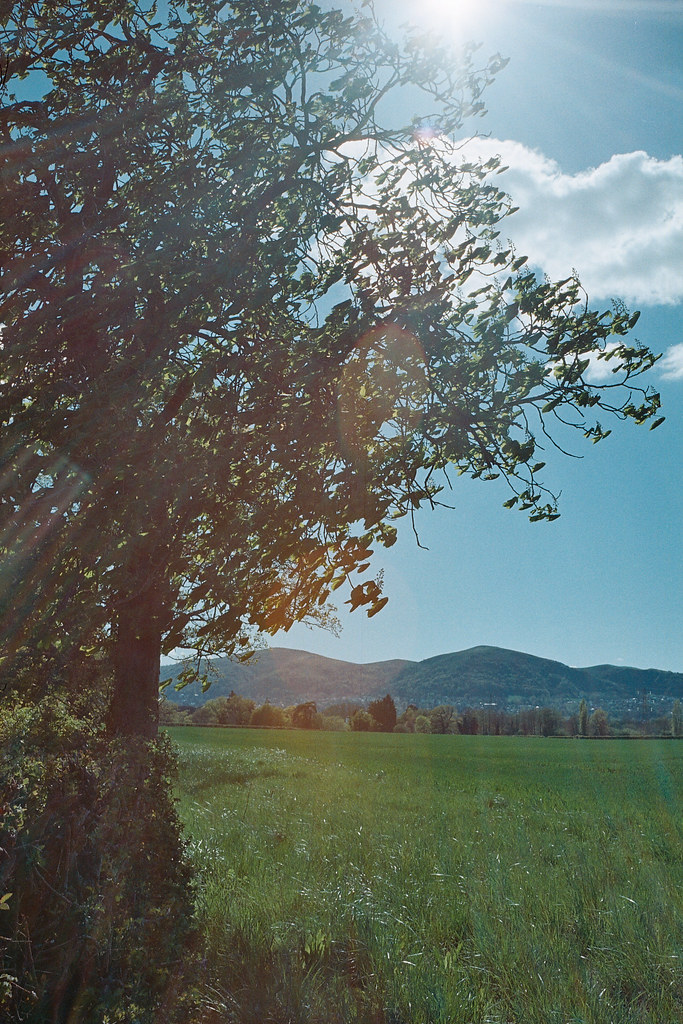
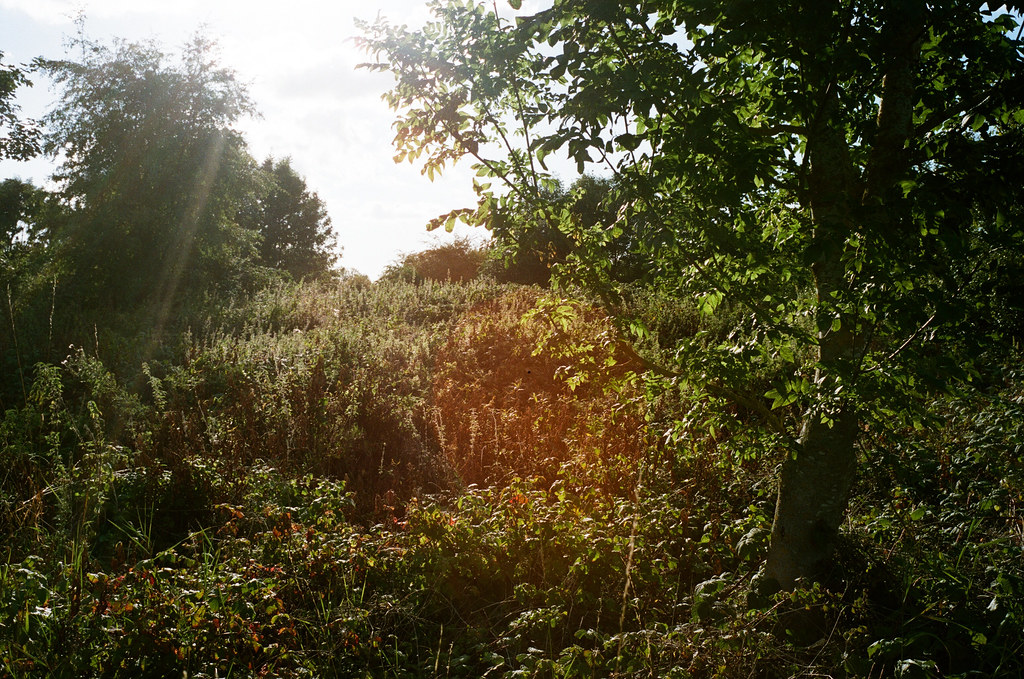
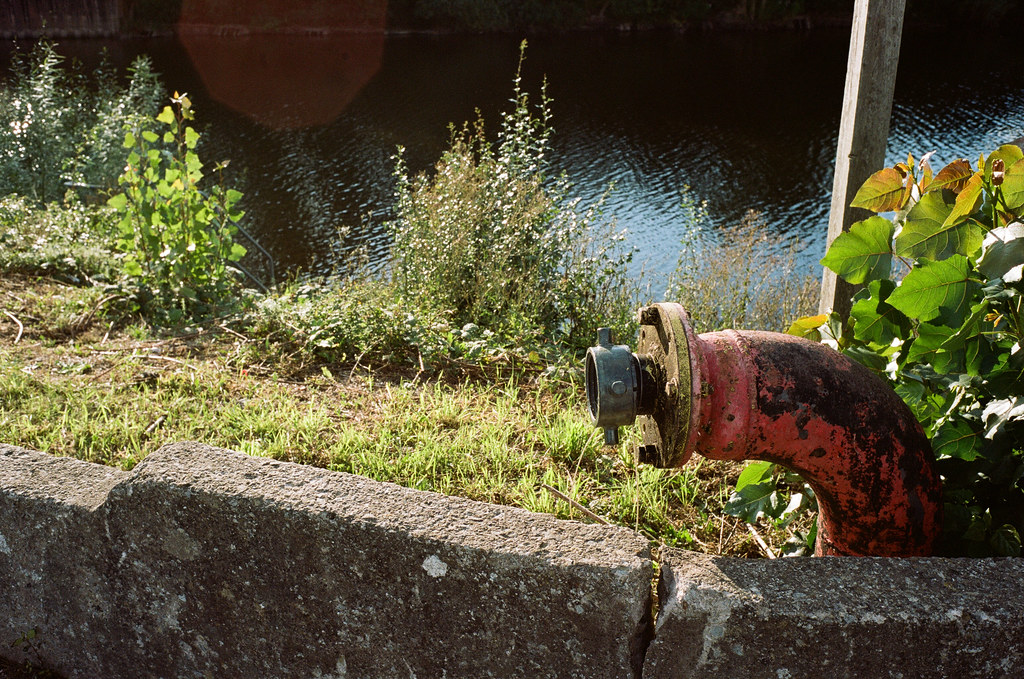 The question for me though is not whether or not this makes it a bad lens, but more whether or not this is a character trait I favour. Whilst it is, or at least can be very unpredictable, the results can be quite lovely. And of course, if you’re careful with it, the flare can be largely avoided.
The question for me though is not whether or not this makes it a bad lens, but more whether or not this is a character trait I favour. Whilst it is, or at least can be very unpredictable, the results can be quite lovely. And of course, if you’re careful with it, the flare can be largely avoided.
A positive character trait/Unrealistic expectations
When I was first looking for a 35mm Summicron, and started reading about the v3 it was actually this potential for flare that turned me on to the lens rather than off it. I saw this review and was enthralled by the shot down the canal. What’s daft in hindsight is that I think I was somehow tricking myself. On one hand I was buying a Summicron, and therefore I was buying a near perfect lens. On the other hand I was buying something that was flawed in a way that I found attractive. I’m not entirely sure how I managed to combine these two almost diametrically opposite things in my head, but of course what I ended up with was much closer to objectively imperfect. 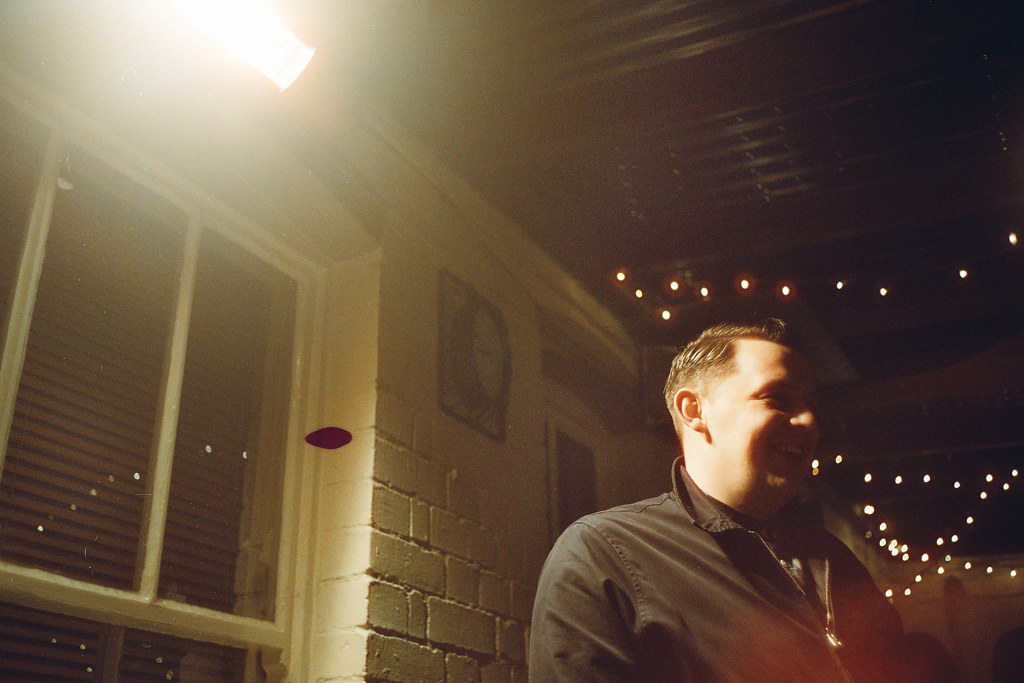 I also got something I hadn’t counted on, which was just how much of an impact this imperfection would have on how I would feel about the lens longer term. This far down the road from purchase I think of this lens as less one I’d choose for day-to-day use, and more a lens I’d use when I’m specifically after the that look that it gives – which as you might have surmised really wasn’t the relationship I entirely expected to have with any edition of the lauded Summicron.
I also got something I hadn’t counted on, which was just how much of an impact this imperfection would have on how I would feel about the lens longer term. This far down the road from purchase I think of this lens as less one I’d choose for day-to-day use, and more a lens I’d use when I’m specifically after the that look that it gives – which as you might have surmised really wasn’t the relationship I entirely expected to have with any edition of the lauded Summicron.
Forcing it to work, or letting it be what it is
Since coming to this relationship with it, I have argued with myself about buying a hood for it to see if I can “fix” the “flaw”. Unfortunately this comes with one quite big caveat for me – I hate using hoods on rangefinder lenses! Even the slotted ones get in the way of the viewfinder which bugs me no end. I feel like if I were to buy a hood just to stop the flare, I might well just be better with a different lens anyway. That, or just shoot with the Contax T3, which as I mentioned is often more convenient anyway. Apart from anything else, would a hood actually solve the problem or just reduce it slightly? I suspect the latter. Because of this I have come to this relationship with it where I just let it be what it is. I’ve accepted the flare as part of its function. It’s just unfortunate that lately I have been less and less inclined to shoot in a way that I want this trait as part of my photography. 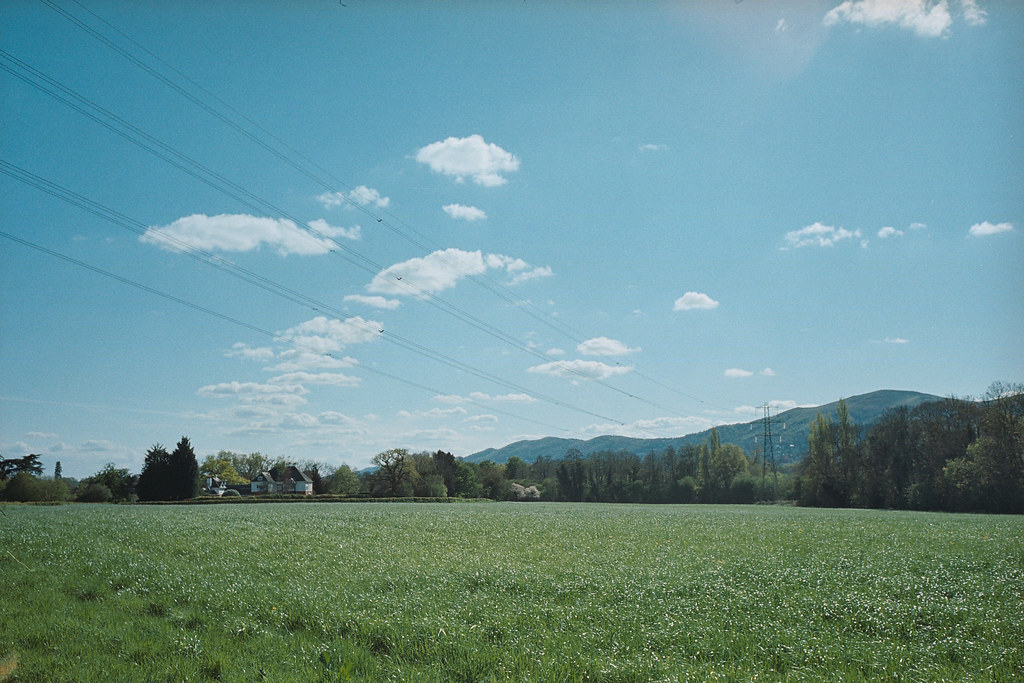 Of course, whilst this propensity to flare might be the thing that makes me wonder about selling it, it’s other main character trait, its lens contrast, significantly adds to the argument for keeping it.
Of course, whilst this propensity to flare might be the thing that makes me wonder about selling it, it’s other main character trait, its lens contrast, significantly adds to the argument for keeping it.
Resolution and Contrast
As far as I can work out, the Leica 35mm Summicron v3 is a lens that’s from a period of time where Leica’s focus on lens resolution was reduced and they looked to produce lenses that had higher contrast instead. What this supposedly means is that whilst it might not be as high resolving as the version 1 that came before it, or indeed the version 4 that came after it, it makes up for this lack of resolving power it in the contrast stakes. I must admit, I haven’t tried either version 1 or 4 so commenting directly on this would be a little difficult. I have shot quite a lot with the version 3 I have here though, and it’s safe to say, lens contrast is certainly not lacking! 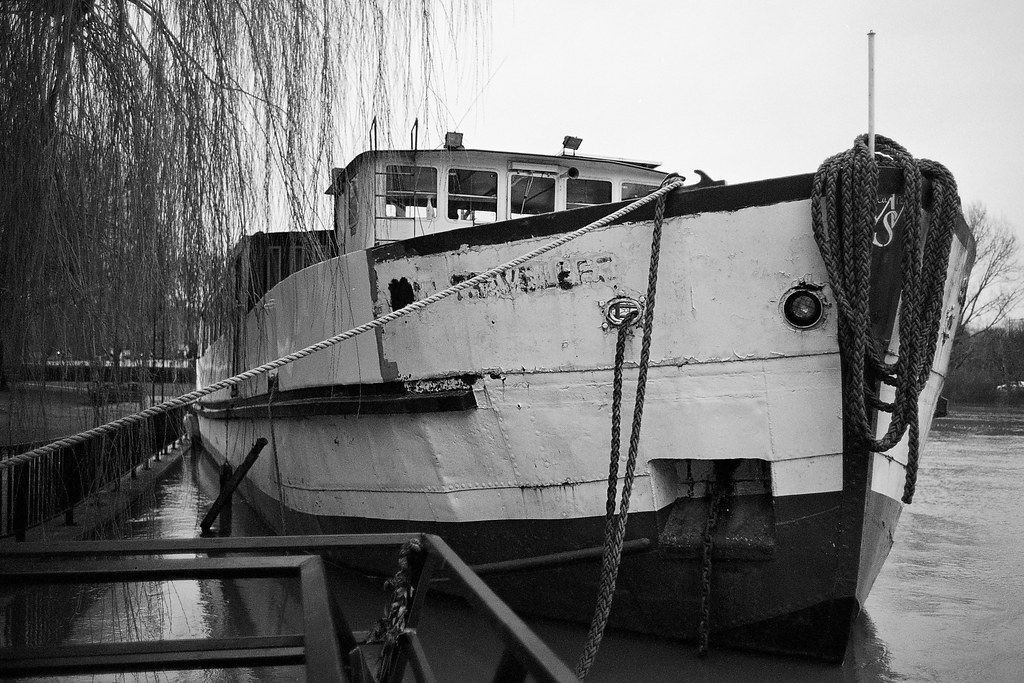 In layman’s terms this lens takes photos that are subjectively sharp. So sharp in fact that I can hardly imagine how the greater resolving power of the other versions of this lens could bring anything much more to the table. But then of course this does come from someone who’s largest print from this lens is 6×9″, and that was made from a 10mp equivalent scan. As such, it could be argued that any greater level of resolving power would be lost on me anyway.
In layman’s terms this lens takes photos that are subjectively sharp. So sharp in fact that I can hardly imagine how the greater resolving power of the other versions of this lens could bring anything much more to the table. But then of course this does come from someone who’s largest print from this lens is 6×9″, and that was made from a 10mp equivalent scan. As such, it could be argued that any greater level of resolving power would be lost on me anyway. 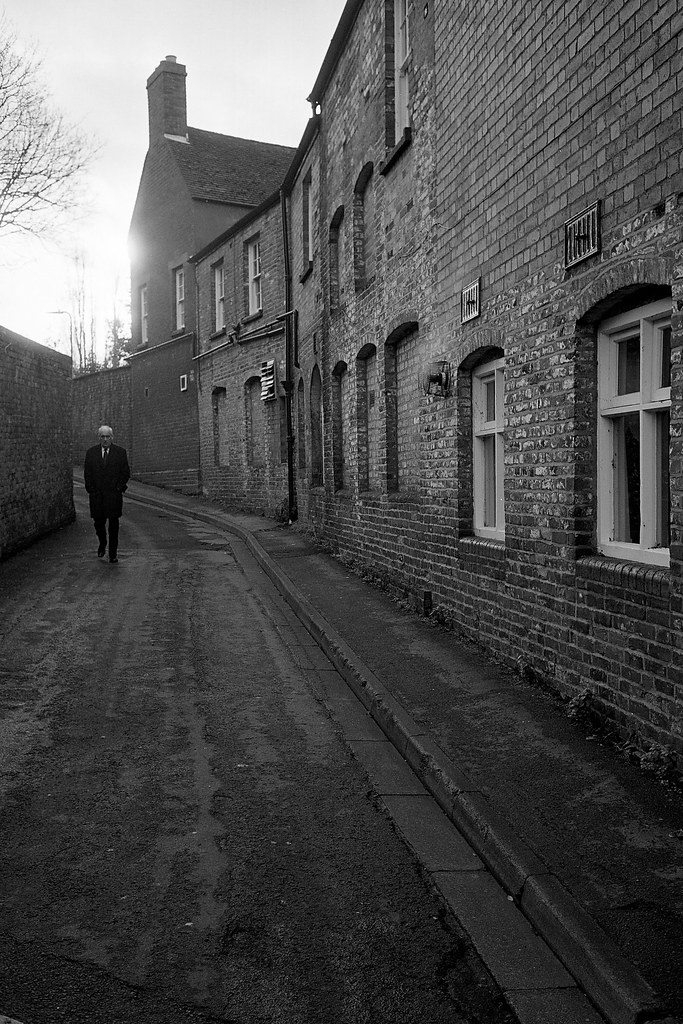 What’s even more impressive about the sharpness of this lens, is the consistency of the sharpness right into the corners. I haven’t shot anything flat field at f/2 to test this statement to the nth degree, but in normal day-to-day use I’ve never been let down by corner performance.
What’s even more impressive about the sharpness of this lens, is the consistency of the sharpness right into the corners. I haven’t shot anything flat field at f/2 to test this statement to the nth degree, but in normal day-to-day use I’ve never been let down by corner performance.  I’ve also never really felt myself let down by shooting this lens at wider apertures. I suspect it might be slightly softer, but really that’s more from reading other people’s thoughts than specifically from my own observations. In short, the 35mm Summicron v3 is a sharp lens. Very sharp in fact, especially considering it was designed in the 70’s. What’s nice about it though is that it doesn’t quite give that ultra high resolving, high contrast look of modern lenses that are designed to work on digital. Instead it has what I think of as a more structural sharpness – there’s stacks of detail, but somehow not so much that it becomes a distraction.
I’ve also never really felt myself let down by shooting this lens at wider apertures. I suspect it might be slightly softer, but really that’s more from reading other people’s thoughts than specifically from my own observations. In short, the 35mm Summicron v3 is a sharp lens. Very sharp in fact, especially considering it was designed in the 70’s. What’s nice about it though is that it doesn’t quite give that ultra high resolving, high contrast look of modern lenses that are designed to work on digital. Instead it has what I think of as a more structural sharpness – there’s stacks of detail, but somehow not so much that it becomes a distraction. 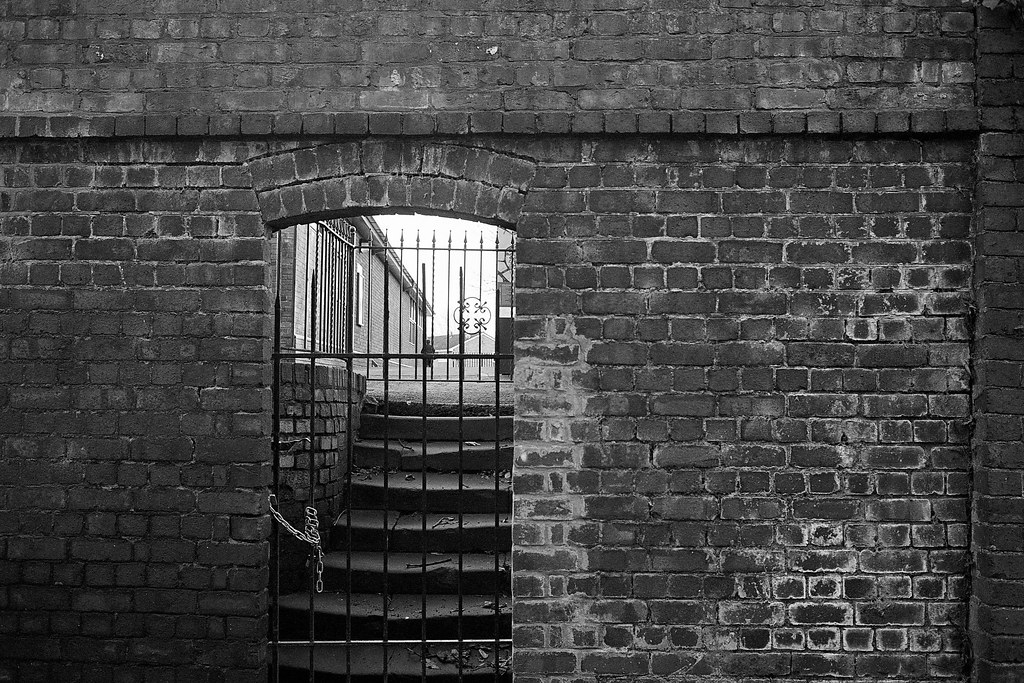 It’s the type of sharpness that I think looks especially nice with higher contrast black and white film – specifically in fact ilford XP2, which I think looks stunning with this lens, particularly when shooting urban environments where the contrast picks out the detail of buildings etc, but doesn’t feel like it presents it in a distracting way. If any of this resolution/contrast/flare stuff doesn’t make any sense to you, have a read of my post here explaining what I think it all means.
It’s the type of sharpness that I think looks especially nice with higher contrast black and white film – specifically in fact ilford XP2, which I think looks stunning with this lens, particularly when shooting urban environments where the contrast picks out the detail of buildings etc, but doesn’t feel like it presents it in a distracting way. If any of this resolution/contrast/flare stuff doesn’t make any sense to you, have a read of my post here explaining what I think it all means.
Other observations
Other than my comments on contrast and flare, I don’t really have that much else to say about the 35mm Summicron v3’s character. Outside of the two aforementioned fairly defining traits, it’s just a pretty good lens. I do notice a little bit of a vignette, but nothing to get too excited about. It also distorts a little bit, though in no way would I go as far as to penalise it for what minor impact this does have. I’ve never noticed any nasty fringing or any other uglies that people get their knickers in a twist about these days, but then I don’t shoot it on a digital camera, or really care so much about those sorts of things in the way some do. 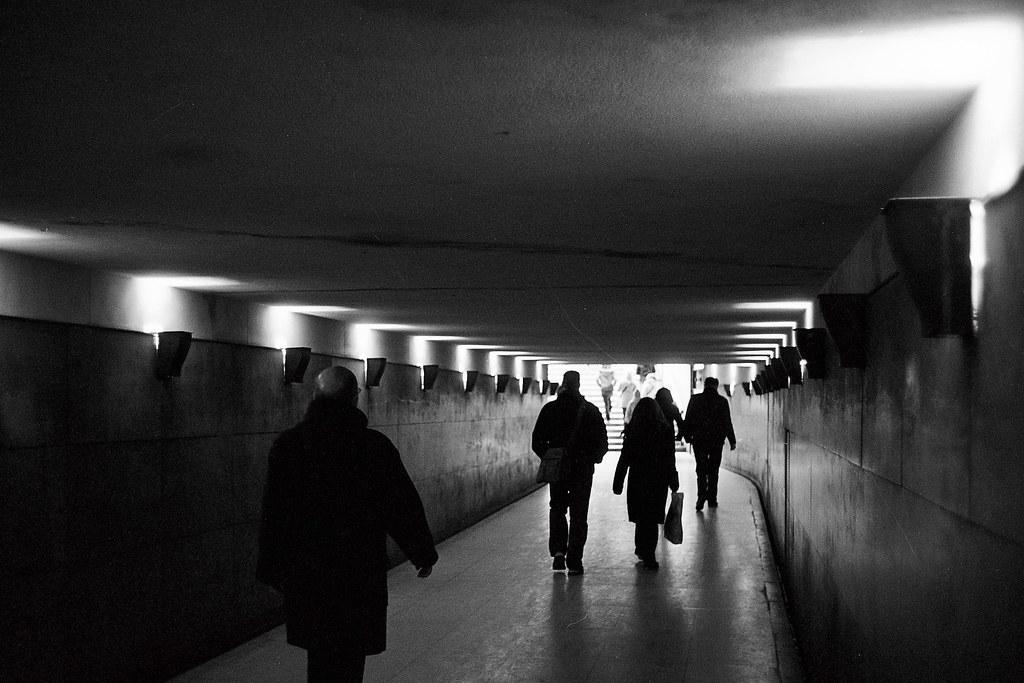
In use
It’s also a really nice lens to use. It has a nice big tab which I definitely approve of, and since I had mine cleaned recently it is also lovely and smooth and clicky in all the ways you might hope it to be. It’s also tiny, which is becoming a bigger and bigger deal for me. Especially in winter where I like to tuck my camera inside my coat, I really appreciate a smaller lens. 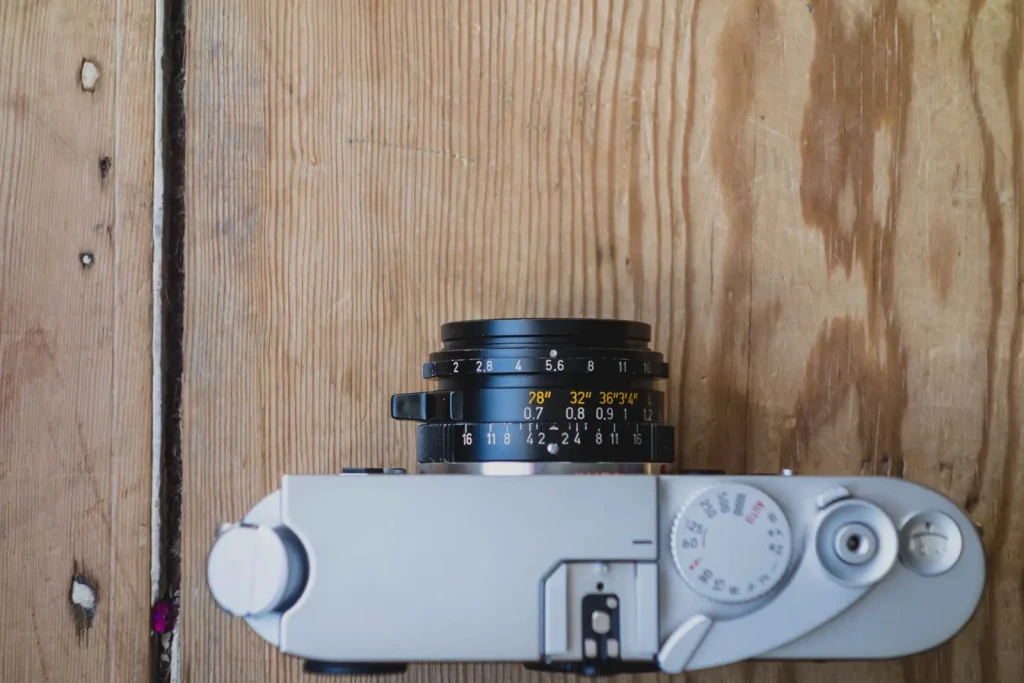
Where this leaves me
So what does this all mean for the 35mm Summicron v3 and me. Well, I was hoping writing this would help me decide to sell it – so much for that plan, I’ve decided to keep it! When I bought it I wanted a lens that was suited to shooting film; a lens from an era when digital wasn’t even a notion, never mind a consideration. Above all, I wanted a lens that had character and wasn’t quite as clinical as more modern glass, and that’s exactly what I got! In fact, I got something ever so slightly more than more than I bargained for. 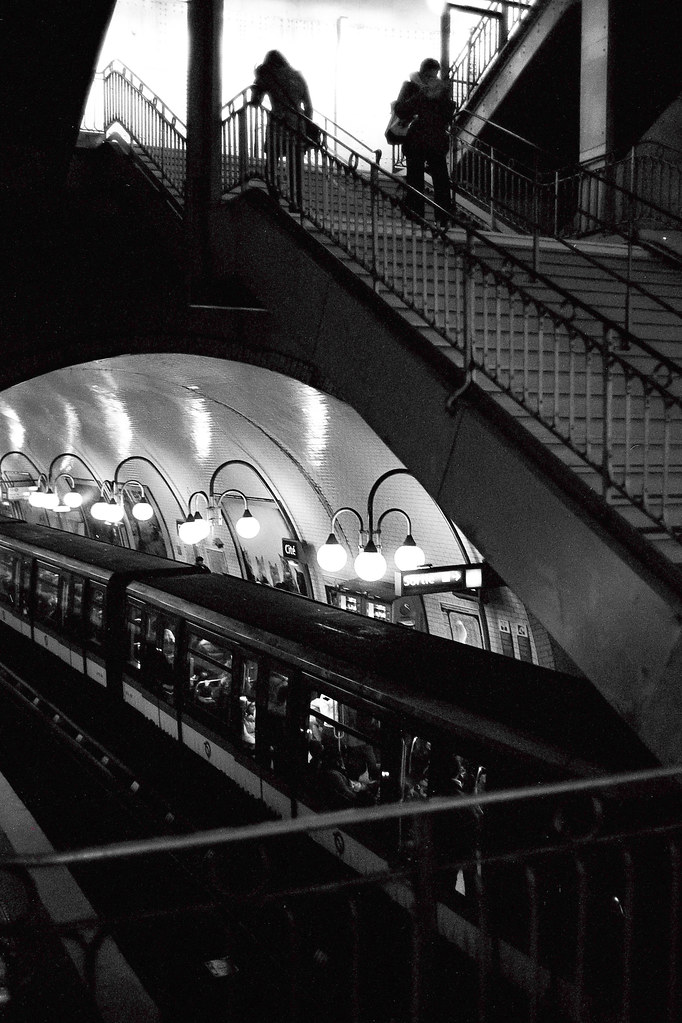 Getting more character than I expected combined with the fact that I’ve since bought a 50mm Summicron v4 that’s much better suited to living on my camera, and the fact that my shooting habits dictate that I only really ever shoot 35mm with a compact camera or in very low light, all means the 35mm Summicron v3 sits largely unused. As such, logic perhaps dictates that I should sell it – I don’t use it often, so how much use is it to me?
Getting more character than I expected combined with the fact that I’ve since bought a 50mm Summicron v4 that’s much better suited to living on my camera, and the fact that my shooting habits dictate that I only really ever shoot 35mm with a compact camera or in very low light, all means the 35mm Summicron v3 sits largely unused. As such, logic perhaps dictates that I should sell it – I don’t use it often, so how much use is it to me? 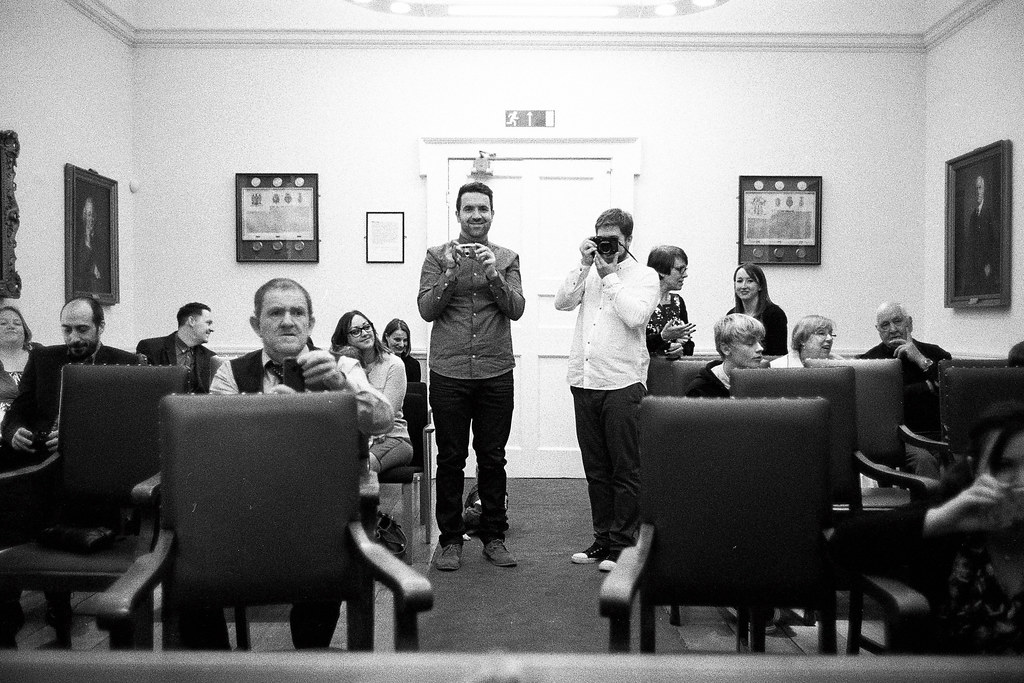
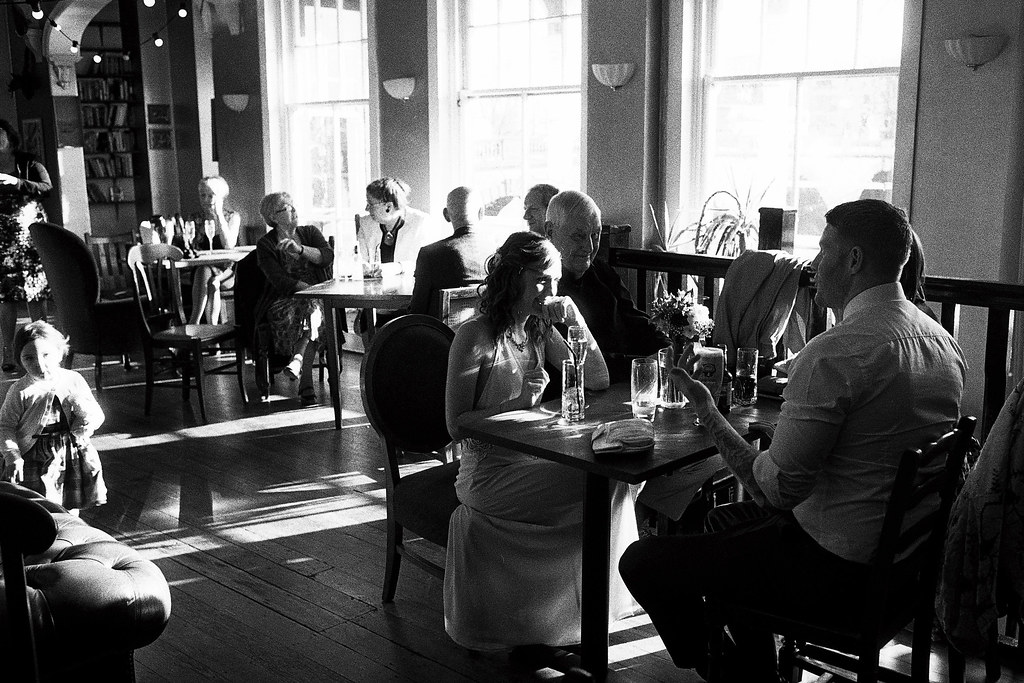
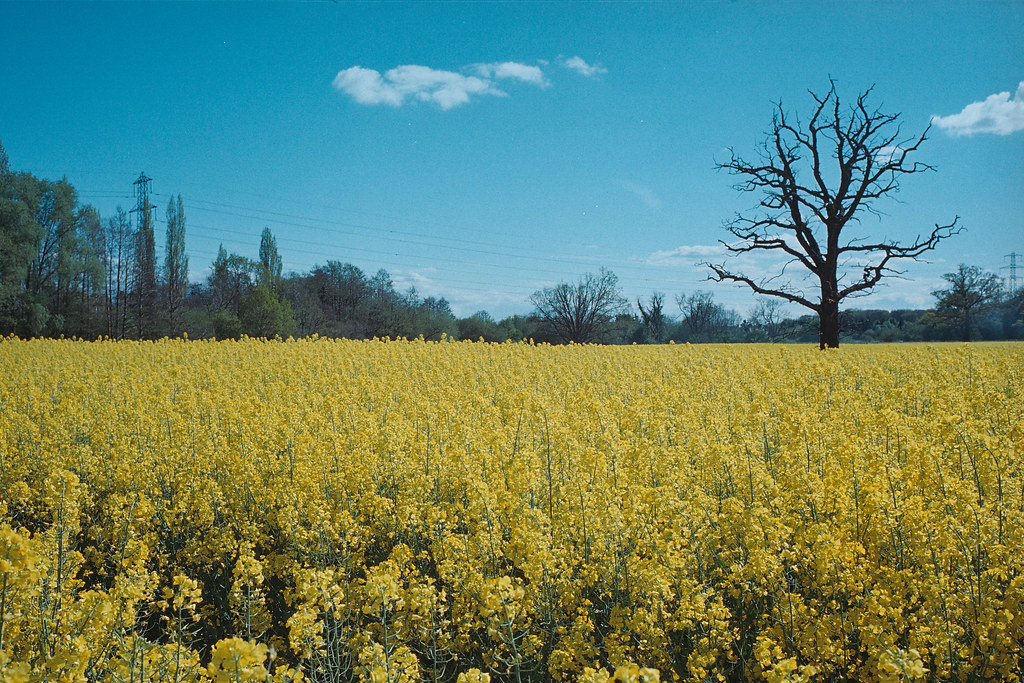

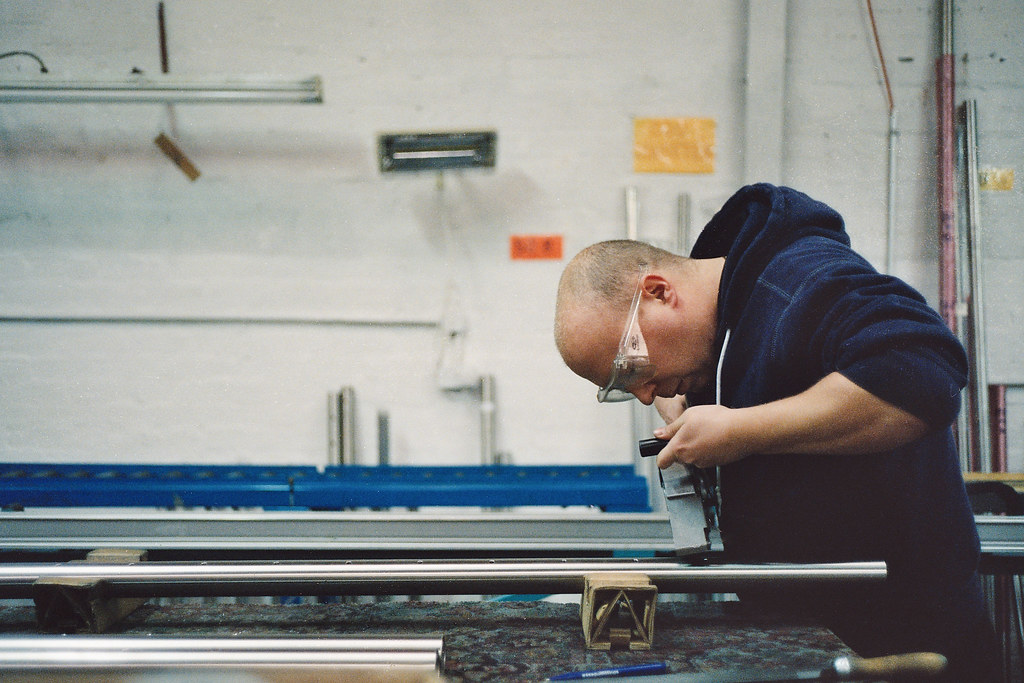
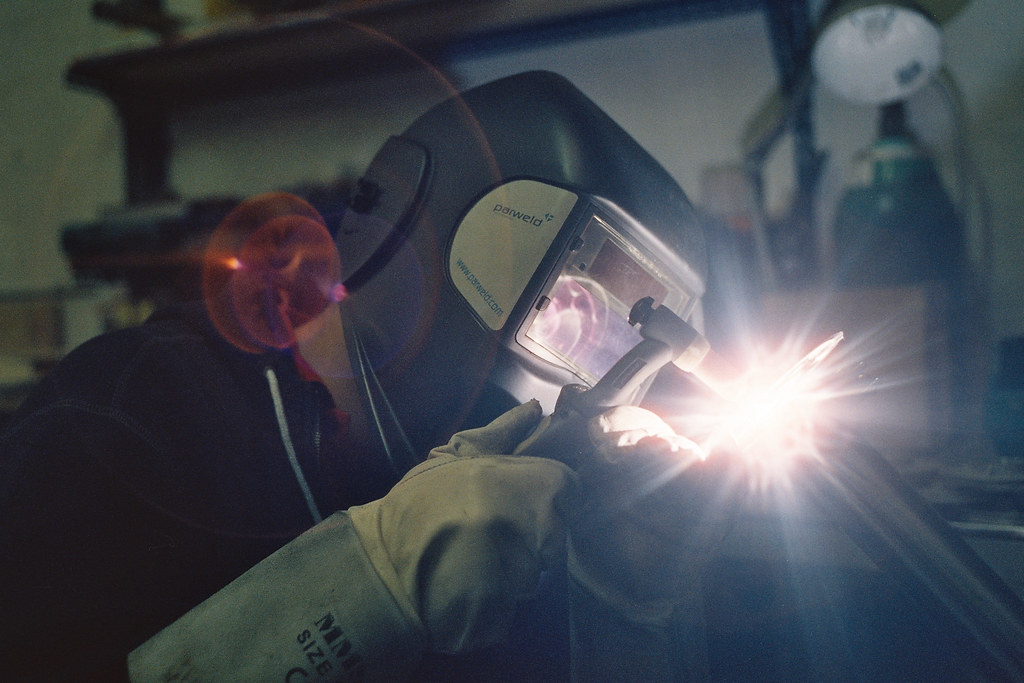



Well the problem is, when I look at the photos I’ve taken with it the idea of selling completely melts away. I look at the way it renders, especially in black and white and I find myself drawn to it in the way I was when I first bought it. I just have a feeling this is one of those decisions I’d live to regret. The reality is, I’m fickle when it comes to gear, just because I shoot less 35mm on a Leica now, doesn’t mean I’ll continue down this path. There was a stage when I shot a lot more with this lens… So maybe that time will come again? Maybe I just need to suck it up, and try a hood too…?
My concluding thoughts
Of course most of my rambling is just representative of where I’m up to with this lens – and I guess my quite personal conflict about it and the way I shoot my various cameras is likely irrelevant to most other people. What’s hopefully more relevant is the way the lens renders its subject, and in that respect I hope I have shown and said enough to demonstrate a look that I am sure many will love. Of course, not all will love it, and for those looking for a modern, more clean or even clinical look, and have the sort of budget that only affords one of these lenses rather than a later model Summicron, one of the Zeiss Biogons or a Voigtlander Ultron is probably an even safer bet.
I think if there is a moral to this story, it is this – don’t just buy this lens because it’s a Summicron, buy this lens because it’s a 35mm Summicron v3. If you’re prepared for, or indeed looking for the character I’ve described I’d be very surprised if you’re disappointed!
Cheers
Hamish
Links
Adam Mareli’s Review
A useful bit of history about the 35mm ‘cron
Share this post:
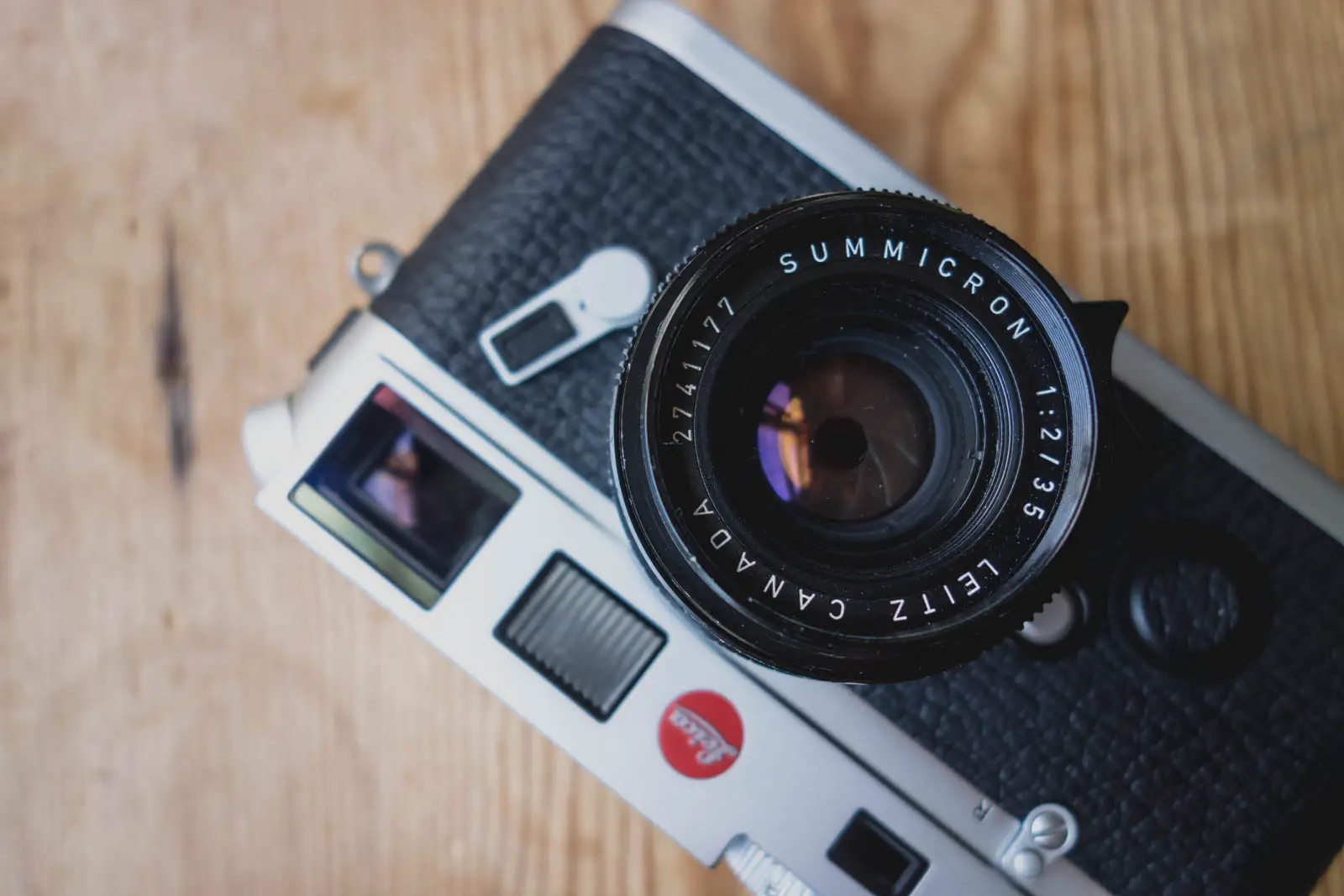
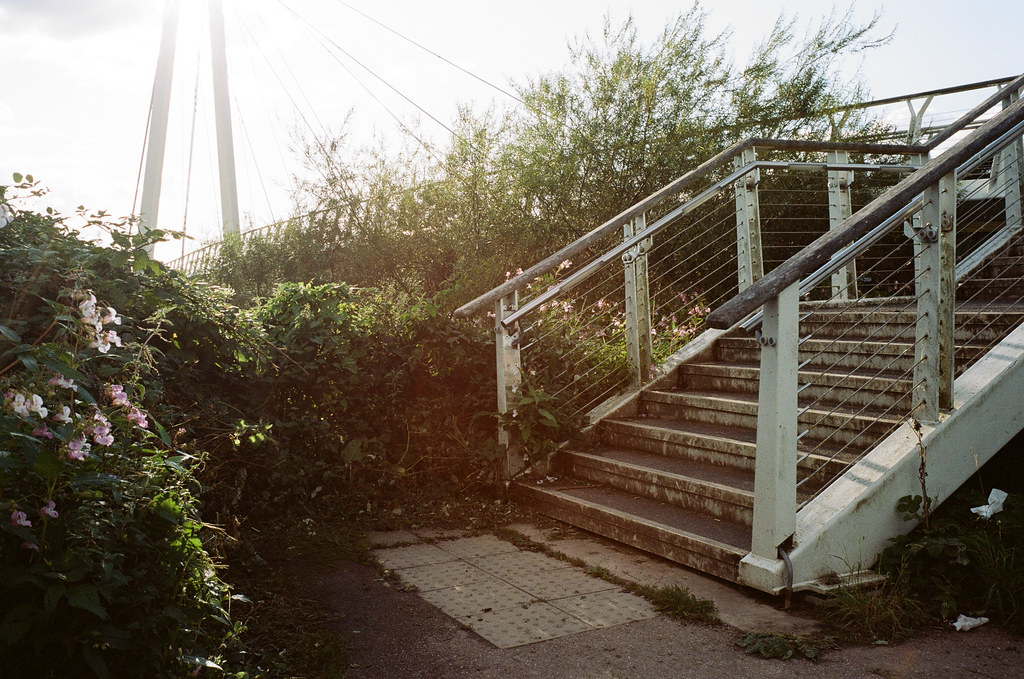
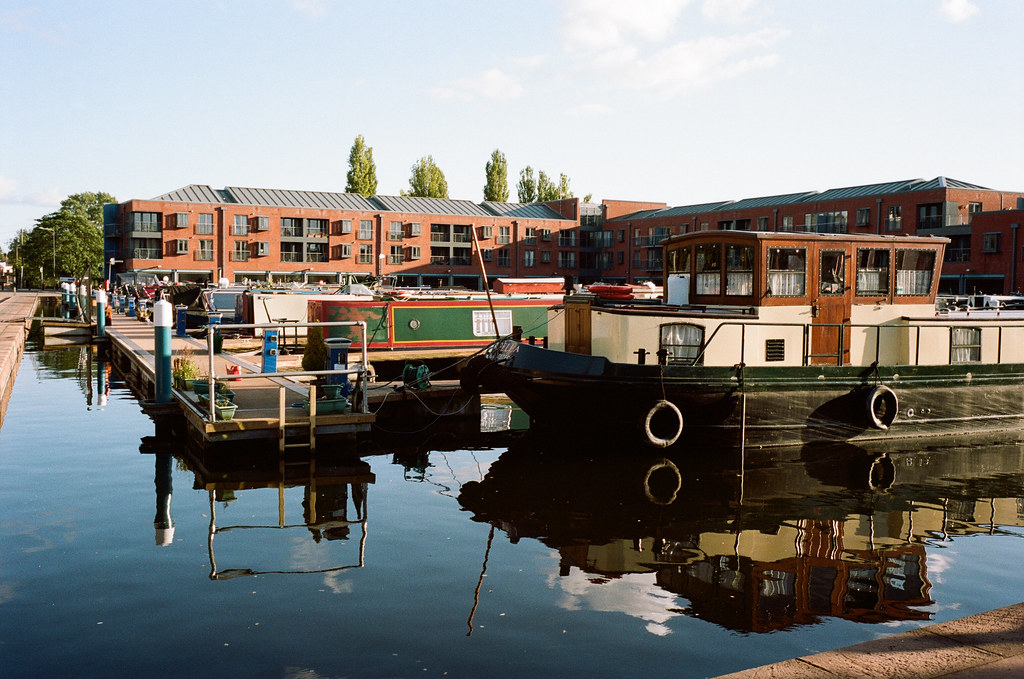








Comments
Stephen on Leica 35mm f/2 Summicron v3 Lens Review
Comment posted: 19/09/2015
If you want, I will take it off your hands for a fiver!
:)
Comment posted: 19/09/2015
Gary on Leica 35mm f/2 Summicron v3 Lens Review
Comment posted: 21/09/2015
Comment posted: 21/09/2015
Comment posted: 21/09/2015
Comment posted: 21/09/2015
Comment posted: 21/09/2015
Jason on Leica 35mm f/2 Summicron v3 Lens Review
Comment posted: 21/09/2015
I have never seen any flare like your landscapes in any picture I have shot and that's in the middle of summer in Australia so I think that's a good test for any lens :) Of course I do always have a hood on the lens so that may be the reason.
In some situations I prefer the look of the Zeiss ZM lenses for their contrast and sharpness but you just can't beat the Summicron for ease of use and its look overall.
It's quite amazing to scan back to back rolls from the Contax T3 and then from the v4 Cron - the difference is so stark in its colour temperature and "look". They are both from around the same period but it goes to show how much a lens can influence the output of your images.
Comment posted: 21/09/2015
Comment posted: 21/09/2015
Comment posted: 21/09/2015
Mike on Leica 35mm f/2 Summicron v3 Lens Review
Comment posted: 18/04/2016
I was surprised to not see you point out a big plus for the 35mm summicron particularly versions and 3 which is the size. There are other small 35's but many many that are way bigger. Also the 35mm voigtlander 1.4 is an OK lens but not really in the same class. It does have barrel distortion and is pretty soft at the periphery. I think the voigtlander 35mm skopar is superior and does produce a modern look you may be searching.
Comment posted: 18/04/2016
John on Leica 35mm f/2 Summicron v3 Lens Review
Comment posted: 23/09/2019
Comment posted: 23/09/2019
Dat on Leica 35mm f/2 Summicron v3 Lens Review
Comment posted: 18/05/2022
Photography Equipment – Mark Reinert Photography on Leica 35mm f/2 Summicron v3 Lens Review
Comment posted: 02/11/2022